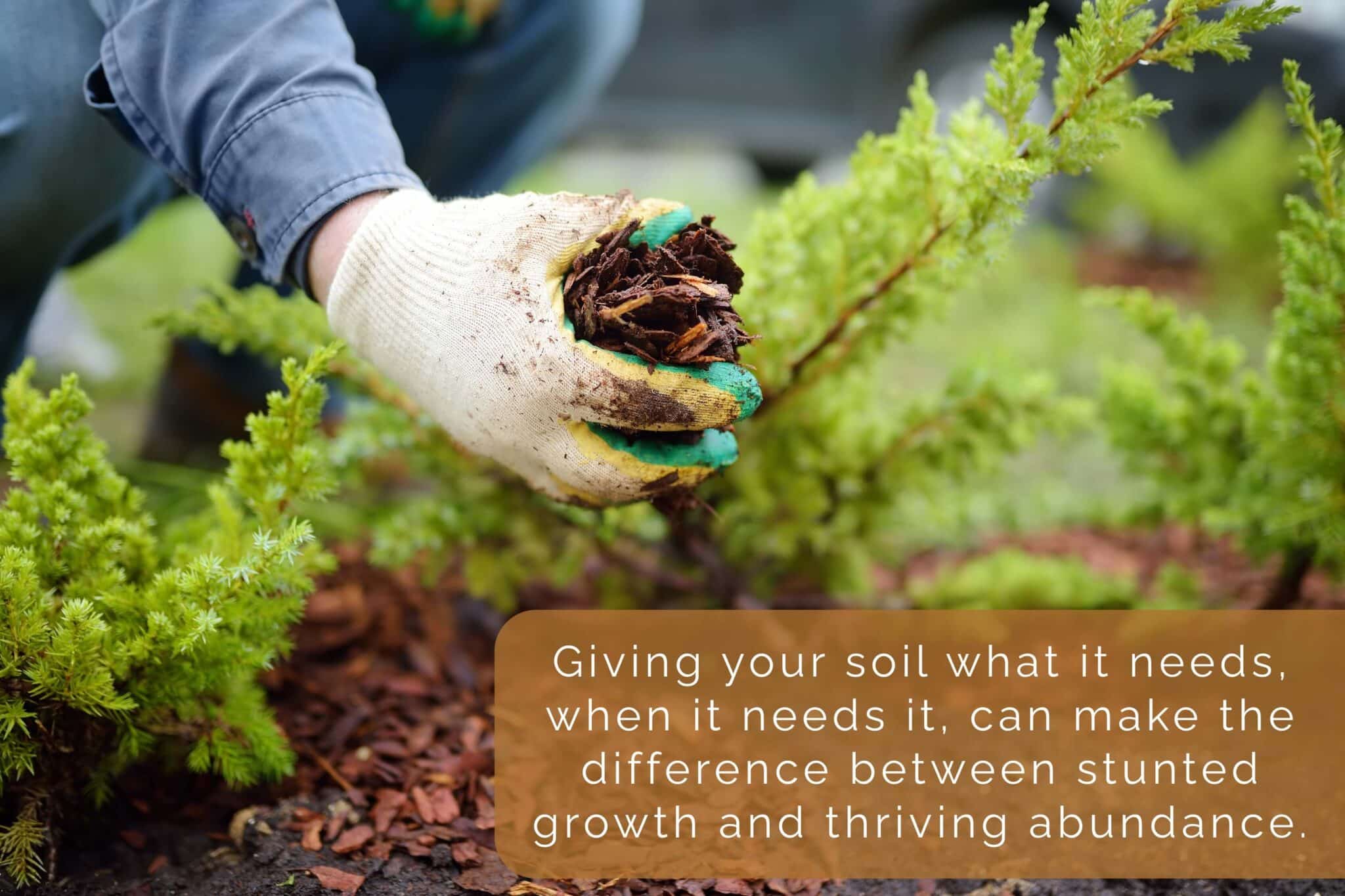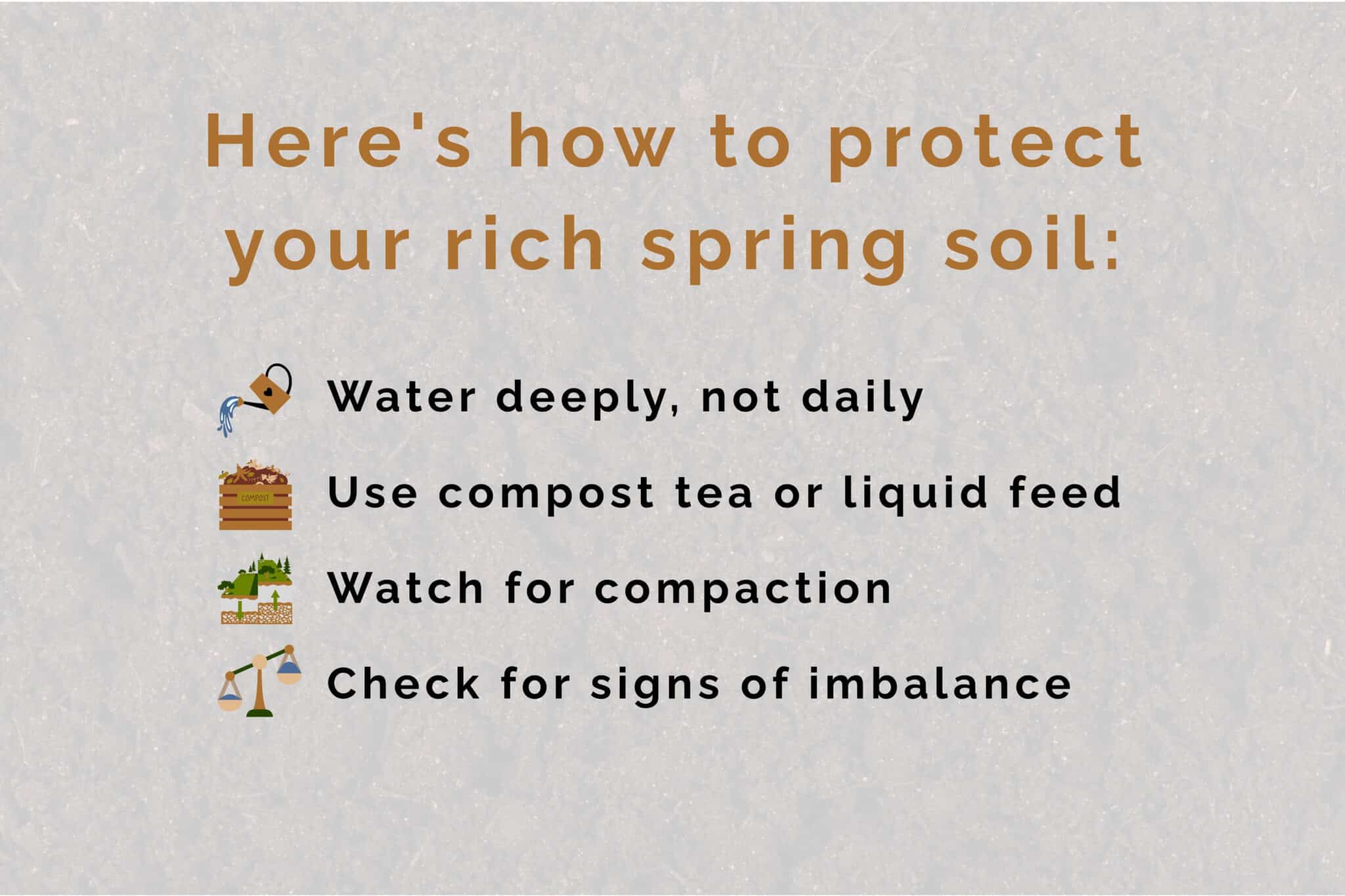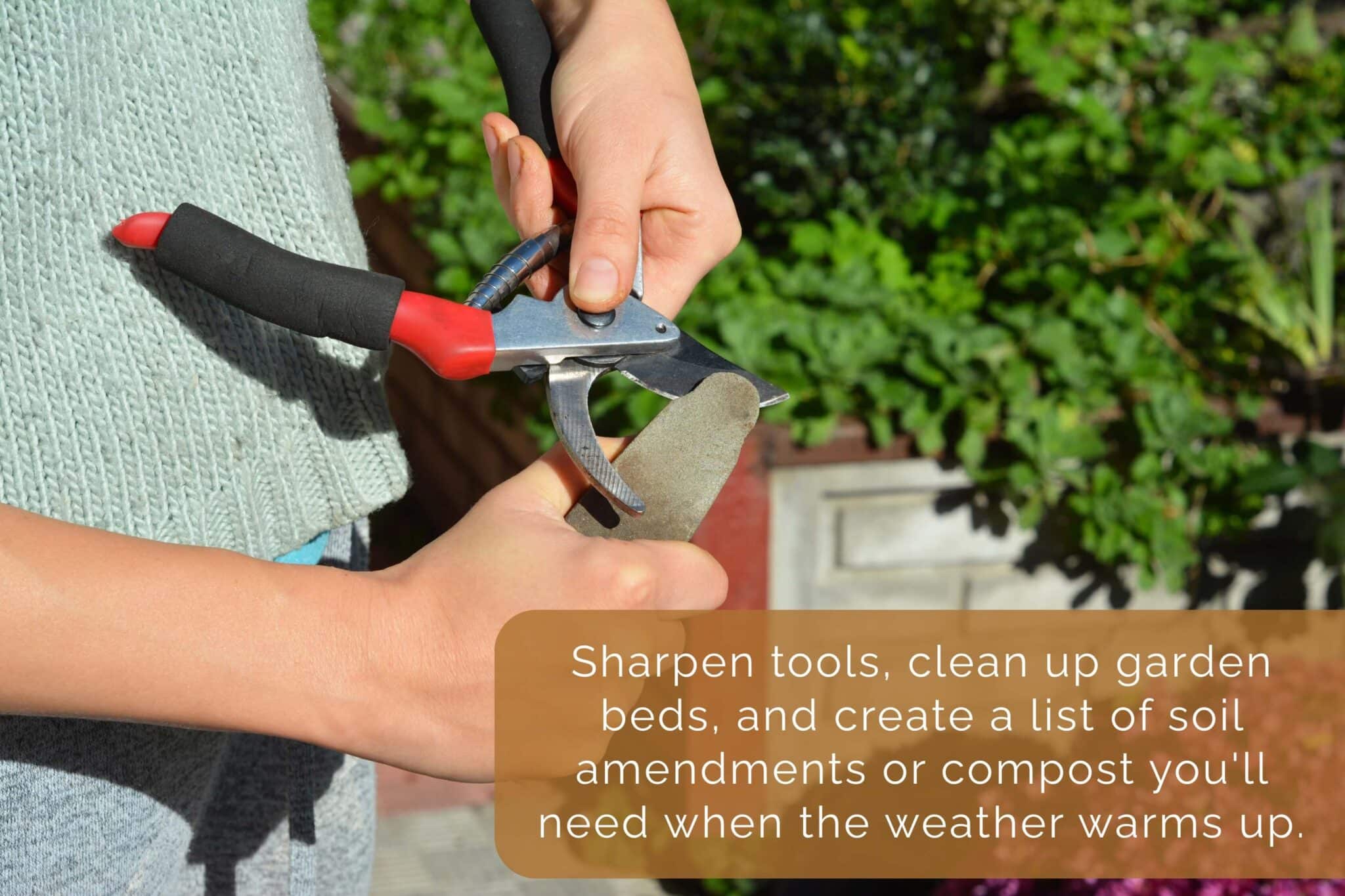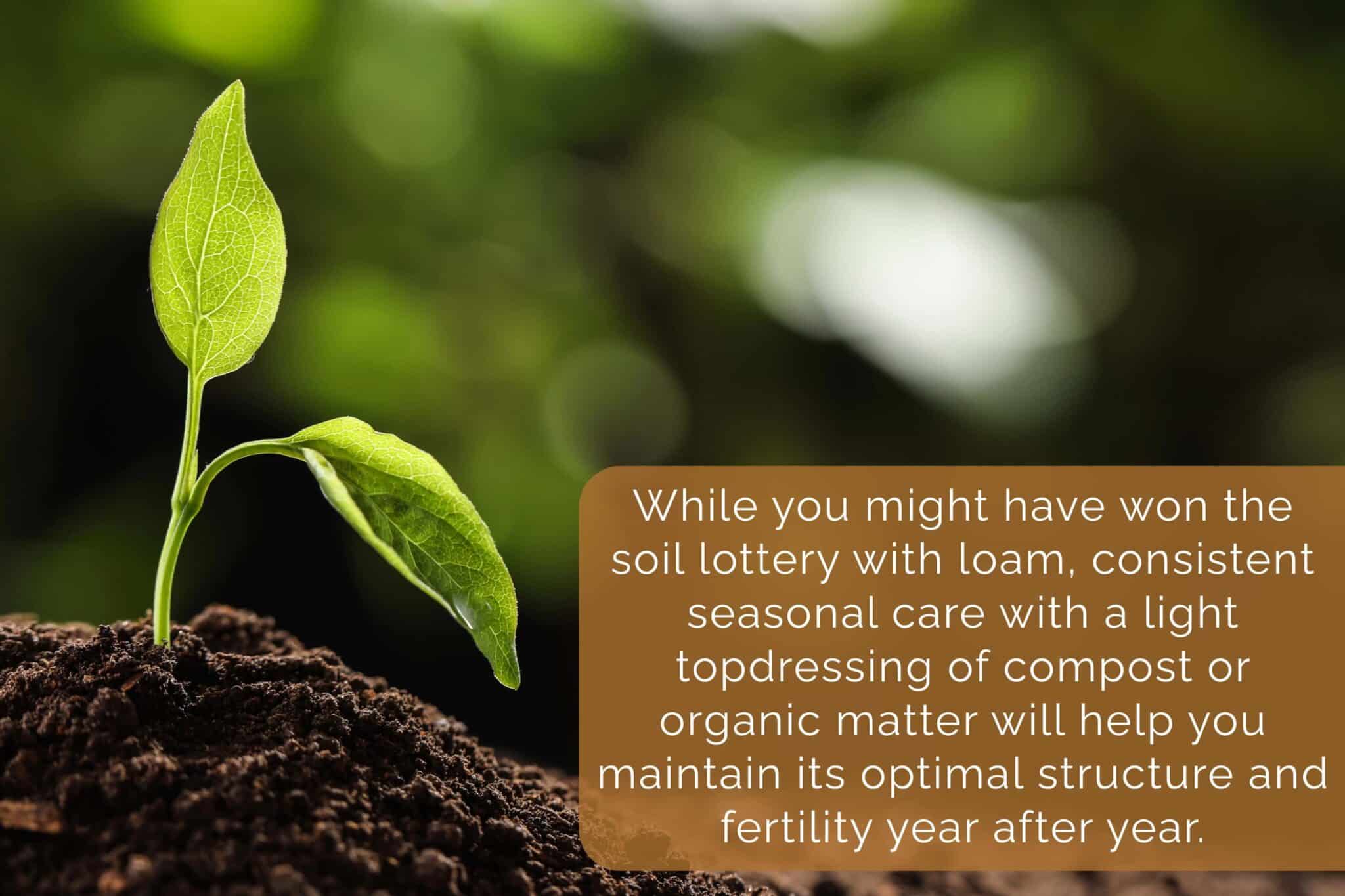Seasonal Soil Care: A Comprehensive Guide to Healthy Soil
Healthy plants start with healthy soil.
But here’s the catch: soil health isn’t static.
As the seasons change, so do the needs of your soil. That’s why seasonal soil care matters. Whether you're a backyard gardener, a homesteader, or a full-time farmer, giving your soil what it needs, when it needs it, can make the difference between stunted growth and thriving abundance.

At Ebyland, we know a thing or two about soil. From high-quality garden soil and topsoil to expert advice, we’re here to help you care for your land—season after season.
This guide breaks down soil care season by season so you can grow smarter all year long.
Not enough time to read? Here's a TL;DR:
- Spring care involves preparing garden beds and amending soil with compost or other organic matter.
- Summer care focuses on retaining moisture with mulch and providing nutrients to plants as they grow.
- Autumn is a good time to add organic matter and plant cover crops to improve soil for the next season.
- Winter care is about protecting the soil from harsh weather and erosion with a cover of mulch or a cover crop.
Ready to discover more? Keep reading below!
Why Seasonal Soil Care Matters
Soil isn’t just dirt. It’s a living system full of bacteria, fungi, minerals, and organic matter. And like any living system, it changes over time.

Rain, sun, snow, and plant growth all affect your soil’s:
- Texture and structure
- Nutrient content
- Microbial activity
- Water-holding capacity
Ignoring these seasonal shifts can lead to the following:
- Compacted soil
- Nutrient loss
- Poor root growth
- Lower yields
But when you build a routine around seasonal care? You’ll improve fertility, reduce pests, and increase crop success.
In short: seasonal soil care is the secret to long-term garden health.
Spring Soil Care: Wake It Up Right
Spring means planting season. But don’t grab the shovel just yet.
After months of snow and cold, the soil needs time to warm up and dry out. Working it too early can destroy the structure and turn good soil into clumps.

Your spring soil care checklist:
- Wait for the right moment
If soil sticks to your shovel or forms a muddy ball in your hand, it’s too wet to work. - Test again if needed
If you didn’t test your soil in winter, now’s your chance. This tells you what nutrients your soil needs for the growing season. - Amend soil based on test results
Add lime, sulfur, or a balanced fertilizer, depending on the pH and specific nutrient deficiencies. Compost and aged manure are always welcome. - Aerate gently
Use a broadfork or garden fork to loosen soil without deep tilling. This keeps the microbial life intact while improving drainage and root access. - Keep it covered
Mulch is your best friend. A thick layer (3–4 inches) of straw, bark, or shredded leaves helps retain moisture, suppresses weeds, and reduces surface temps.

- Rake and shape beds
Smooth out the soil surface, remove any leftover debris, and prepare your planting rows or mounds.
Spring is about energizing the soil, laying a solid foundation, and ultimately, planting! (After all, planting is the whole point.) Remember—healthy spring prep = easier summer maintenance.
Summer Soil Care: Defend and Nourish
Summer brings sunshine and growth. It also brings heat, drought, and nutrient loss.
If you’re not careful, your rich spring soil can quickly dry out, harden, or wash away in a storm.

Here’s how to protect it:
- Water deeply, not daily
Shallow watering only wets the surface and encourages weak root growth. Instead, water less often but soak the soil several inches deep. - Use compost tea or liquid feed
These give plants and microbes a gentle nutrient boost during the heat of the season. Learn how to make compost tea with this Organic Gardener’s guide. - Watch for compaction
Avoid heavy foot traffic in garden beds. If needed, use stepping stones or paths to minimize pressure on the area. - Check for signs of imbalance
Yellowing leaves, stunted growth, or blossom drop can indicate nutrient issues. Spot-treat with organic amendments as needed.
Summer is about maintenance and defense. Keep the soil hydrated, shaded, and fed—and it’ll keep working for you.
Fall Soil Care: Restore and Rebuild
Your soil has worked hard all season. Now’s the time to replenish it.
Fall is an ideal time for adding organic matter, adjusting pH levels, and preparing for the colder months ahead. Anything you do now will pay off next spring.
Fall soil care tips:
- Clear out spent crops
Remove dead plants and weeds. Compost healthy material, but discard diseased plants to avoid spreading pathogens. - Add compost or aged manure
Spread a 1–2 inch layer and gently work it into the top few inches of soil. - Amend with minerals
Fall is the best time to add lime (if your soil is acidic) or rock phosphate. These break down slowly and will be ready by spring.

- Plant a cover crop
Sow winter rye, oats, or clover to improve structure and add nutrients. They also help crowd out fall weeds and prevent erosion.These help prevent erosion, add organic matter, and even fix nitrogen into the soil. Learn more from this guide to cover crops. - Consider a no-till approach
Leaving roots in place can help maintain structure and feed beneficial microbes. Chop plants at the base and let the roots decompose naturally. - Apply mulch
A 2–4 inch layer of straw, leaves, or wood mulch helps insulate the soil, suppress weeds, and prevent erosion. Our blog post, “Mulch: Everything You Need to Know,” explores the basics of mulch and offers practical guidance on its application.
Fall is a “reset” moment for your soil. Rebuild now and save time later.
Winter Soil Care: Protect and Plan
Winter may feel like the off-season, but your soil still needs some attention.
Cold temperatures, wind, and snow can erode bare soil and damage its structure. But a few simple steps can shield your soil and set you up for success in the spring.
Here’s what to do:
- Avoid walking on beds
Frozen or saturated soils are easily compacted. Use boards to distribute your weight if you need to access your garden. - Run a soil test
Winter is a great time to send a sample to your local extension office or use a DIY kit. That way, you’ll know what amendments to add in the spring. Read more about soil testing in our blog: “Transforming Your Soil for Vibrant Plant Life.” - Clean and plan
Sharpen tools, clean up garden beds, and create a list of soil amendments or compost you'll need when the weather warms up.

Think of winter as the planning season. The more you prep now, the easier your planting season will be.
Bonus Tip: Know Your Soil Type
Before you tackle seasonal care, it helps to know what type of soil you’re working with.
Understanding your soil type is like getting to know your garden's personality – it tells you what it needs to thrive!
There are three basic types of soil:
- Clay: This soil is a nutrient powerhouse, often rich and fertile, but its tightly packed particles mean it can feel heavy and sticky. It's like a slow-release sponge, holding onto water and nutrients beautifully, but often struggling with drainage and aeration. To help it breathe and prevent waterlogging, consistently incorporate plenty of compost, well-rotted manure, or other organic matter. This lightens the soil, improves drainage, and makes it easier for roots to spread.

- Sandy: Light, loose, and often feeling gritty to the touch, sandy soil is known for its excellent drainage. While this means it warms up quickly in spring, it also means water and vital nutrients can leach through rapidly. To build up its fertility and improve its ability to hold onto moisture and nutrients, consistently amend it with generous amounts of rich compost. Regular mulching is also key, as it helps conserve water and slowly releases nutrients as it breaks down.
- Loam: Often called the gardener's dream soil, loam is that perfect balance – a rich, dark, crumbly mix that feels wonderfully soft and holds just the right amount of moisture and nutrients while still draining beautifully. While you might have won the soil lottery, consistent seasonal care with a light topdressing of compost or organic matter will help you maintain its optimal structure and fertility year after year, ensuring your plants always have the best growing environment.

You can learn more about identifying and improving your soil type from the USDA’s Soil Health Resources.
Final Thoughts: A Year-Round Strategy for Soil Health
Good soil isn’t built in a day. It takes time. But by tuning into the needs of each season, you’ll create a foundation that keeps your plants healthy and productive all year long. Healthy soil is a living system full of beneficial microorganisms. Nurturing this environment helps your garden thrive.
Here’s a quick recap:
- Spring: Prepare and energize
- Summer: Defend and feed
- Fall: Rebuild and reset
- Winter: Protect and plan
Want help choosing the right mulch, compost, or soil amendment for your property? It can feel overwhelming with so many options available, each promising different benefits for your garden. Knowing what your specific soil needs—whether it's improved drainage, nutrient enrichment, or better moisture retention—is key to making the best choice. That's where expert advice comes in handy.
At Ebyland, we’ve got everything you need to care for your soil—season after season. Our shelves are stocked with all you need to help your plants thrive. Stop by or give us a call. Our knowledgeable team is always ready to answer your questions, assess your soil's unique requirements, and guide you toward the perfect products to help you grow a vibrant and productive garden.







